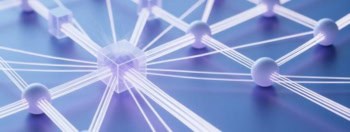
An international team of physicists has created the first system that can produce verifiably random numbers. The technique relies on the inherent uncertainties in quantum mechanics and future versions could help cryptographers to encode information more securely than ever before.
Randomness is central to modern cryptography, which uses long strings of random numbers to form “keys” that can encode and decode sensitive information. Normally such strings are churned out by complex mathematical algorithms, called pseudo random-number generators. But these only approximate random strings, and there is the constant worry that hackers could somehow predict the sequences and gain access to secret files.
Worse still, cryptographers can never be sure that a pseudo random-number generator is unique and genuine. There is no way to prove a string is truly random, and even if it is, there is no way to know if a copy exists elsewhere. “If somebody gives you a bunch of numbers and claims they are random you should be suspicious,” says Christopher Monroe, a physicist at the University of Maryland, US, and leader of the experimental group.
Impossible to copy
Monroe’s group, which has worked alongside physicists at the Université Libre de Bruxelles in Belgium, the Institute of Photonic Sciences in Spain and Cambridge University in the UK, has used quantum mechanics to produce random strings that are impossible to copy. In the quantum world, an object exists in a mixed-up superposition of states until it is measured, at which point it collapses randomly into one of them. In principle, therefore, by observing a sequence of superposed objects, one can generate a sequence of random results.
To do this experimentally, Monroe’s team employed a method known as a Bell test, named after the late physicist John Bell who invented it in 1964. They placed two atomic ions in separate enclosures one metre apart, and then “entangled” them by passing single photons through them. Once entangled, the state of one atom is inextricably linked to the superposed state of the other, so that a measurement of one – in this case, a measurement made by recording the emission of light – causes the states of both atoms to collapse.
Over the course of a month, the researchers measured the states of more than 3000 entangled atomic ion pairs, generating a string of 42 binary digits. Because the correlations between the measured states were less than a certain value, as given by Bell’s famous “inequality”, they were – according to quantum mechanics – certifiably random.
Perfect detection
Our system of trapped atomic ions separated in space with perfect detection is the only system that can be used for this purpose Christopher Monroe, University of Maryland
Bell tests have been performed many times before, however. In particular, they have been performed to show that entanglement can affect the state of objects instantly, even if they are far enough apart that no signals could travel between them without breaking the speed of light – and Einstein’s theory of special relativity. What makes Monroe’s experiment different is that every entanglement event is recorded. In past attempts, limitations in detector efficiency have allowed many state collapses to pass by unnoticed. “Our system of trapped atomic ions separated in space with perfect detection is the only system that can be used for this purpose,” says Monroe.
The researchers are now looking to improve the speed of random-number generation by increasing the efficiency of entanglement, perhaps embedding the system in a solid-state chip.
The research is published in Nature 464 1021.



